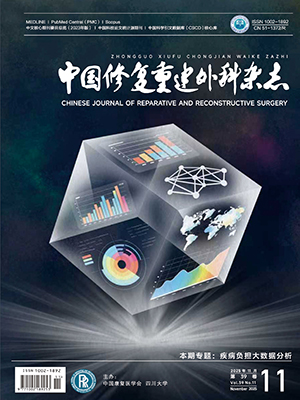Objective To evaluate the results of laminoplasty and foraminotomy in treatment of cervical radiculopathy. Methods Of 29 patients, there were 16 males and 13 females,aged 38 to 72 years with an average of 59 years. The reasons of intervertebral foramen stenosis were:prolapse of intervertebral disc, osteophyte formation of Luschka joint, spinal canal stenosis combined with thicknessof flavum ligmentum and facet joint hypertrophy. The most frequently affected intervertebral foramen were C5,6 and C6,7. The mostsignifcant symptoms after impairment of nerve root were reduced sensation, muscle weakness and diminished reflexes. On the basis of laminoplasty, theforaminotomy was performed on the stenotic foramen, including grade Ⅰ decompression on 13 occasions, degree Ⅱ on 21 occasions; and double level decompressions were performed on 5 patients.Results After operation, reduced sensation was recovered most significantly andquickly, and the recovery of muscle weakness followed, while the recovery of diminished reflexes was the slowest and worst. In the followed-up patients, the percentage of excellent and good results was 97%.Conclusion In the cervical spondylotic patients who also have foraminar stenosis, performing laminoplasty with foraminotomy can getgood results. If the indication are chosen properly, it can be used widely in clinic.
Citation: AN Chunhou,LIU Xueyong,YUAN Quan,et al.. TREATMENT OF CERVICAL RADICULOPATHY BY LAMINOPLASTY AND FORAMINOTOMY. Chinese Journal of Reparative and Reconstructive Surgery, 2004, 18(5): 396-398. doi: Copy
Copyright © the editorial department of Chinese Journal of Reparative and Reconstructive Surgery of West China Medical Publisher. All rights reserved




